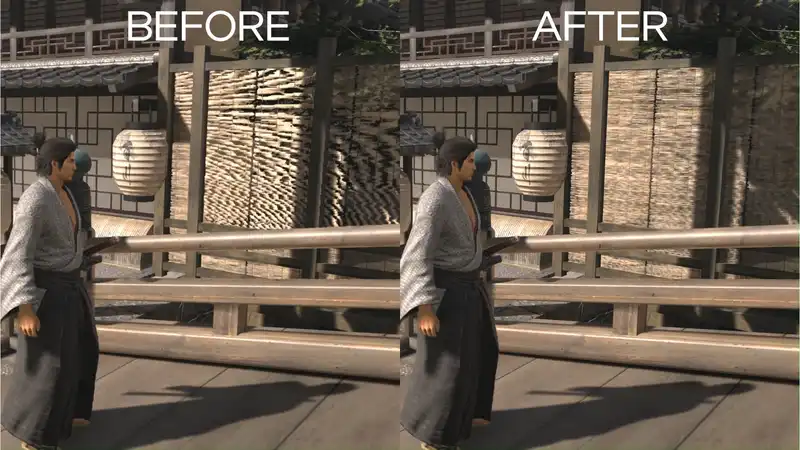Intel's XeSS upscaler may not have developer support like Nvidia's DLSS, but it has proven itself very capable. The latest Intel XeSS 1.3 SDK has now been released, and Intel is eagerly touting the significant improvements in performance and visual quality.
The latest update adds several new quality presets, including Ultra Quality Plus, Ultra Performance, and Native Anti-Aliasing, the last one being Nvidia's DLAA or AMD's FSR 3 Native settings (via Wccftech). Ultra Quality Plus, on the other hand, is a 1.3x resolution scaling setting and replaces Ultra Quality.
Ultra Performance, as you might imagine, is said to be a 3x resolution scaling mode for maximum performance. But to maximize image quality, the new SDK utilizes an updated AI model that, according to Intel, provides more detailed reconstruction, better anti-aliasing, less ghosting, and higher time stability.
In practice, this should mean fewer image artifacts than the previous generation model, and to demonstrate this, the company showed off a short video of a "Ryu Ga Gotoku Restoration! To demonstrate this, the company showed a short video of a scene from "Ryu ga Gotoku: Restoration! from "Ryu ga Gotoku Soshin!": the company showed a brief clip of a scene from "Ryu ga Gotoku Soshin!" in which a character moves in front of a screen on a nearby wall.
It is not clear which preset is being compared to the previous version, but the footage shows much less flickering and visual artifacts in the new version compared to the "before" comparison.
As for performance, Intel has released some figures generated using a modified build of XeSS injected with the updates made in version 1.3 to show the differences in games that the new version does not yet officially support. These performance numbers were recorded on both an Intel Arc A750 GPU and an Intel Core Ultra 7 155H CPU with a built-in Arc GPU.
The performance numbers tend to show an improvement of about 5-7 fps for most of the games tested, but of particular note is the improvement in Diablo 4 with the ray tracing settings enabled. I recently happened to test the new settings myself and found that on average, the game performance tends to halve when compared to when ray tracing is disabled. Under these challenging conditions, we demonstrated a significant 20 fps improvement over the previous version of XeSS, which is impressive if these numbers prove to be accurate.
For a more complete breakdown of what might be expected on demanding titles when running various image quality presets, a comparison on Cyberpunk 2077 is shown at a higher setting of 1440p, still with ray tracing enabled.
The Ultra Performance mode appears to provide a 6 fps improvement over the XeSS 1.3 quality settings, but the real difference is with the previous version of XeSS.
The 11 fps improvement over the previous lowest XeSS settings is quite significant, but we will have to see for ourselves if these image quality gains are comparable in terms of fidelity.
Still, we are willing to accept any upscaling improvements that come from a solution, especially one that can run on the latest GPUs; the SDK is currently available on GitHub, and Intel is working with game developers to make it easy to integrate it into games currently in production. Intel has stated that it will be working with game developers to make it easy to integrate into games currently in production.


Comments